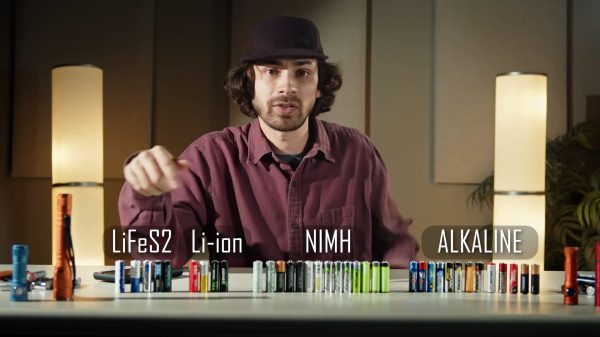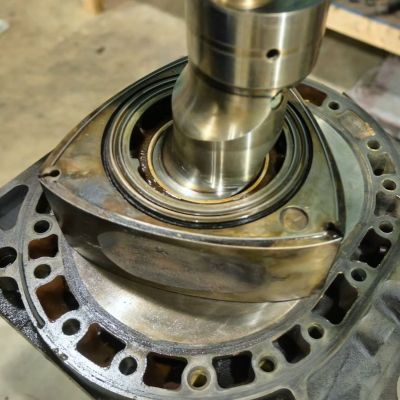In this era of cheap lithium pouch cells, it might seem mildly anachronistic to build AA batteries into a project. There are enough valid reasons to do so, however, and enough legacy hardware that still takes AAs, that it’s worth spending some time deciding which batteries to use. Luckily for us, [Lumencraft] over on YouTube has done the legwork in the video embedded below, and even produced a handy-dandy spreadsheet.
Each battery in the test underwent three separate tests. There was the “leave it in a flashlight ’til it dies” test for real-world usage, but also discharge curves logged at 250mA and 2A. The curves for each are embedded in the spreadsheet so you can see what to expect, along with the calculated capacity at each discharge rate. 2A seems like a fairly brutal load for AAs, but it’s great to see how these cells react to extremes. The spreadsheet also includes the cell’s cost to create a value ranking, which will be of great use to our readers in the USA, where it appears [Lumencraft] is buying batteries. The world market is likely to have the same batteries available, but prices may vary by region, so it’s worth double-checking.
In the video, [Lumencraft] also takes the time to explain the four battery types commonly found in AA format, and the strengths and weaknesses of each chemistry that might cause you to prefer one over another for specific use cases, rather than going by his value rankings. Unsurprisingly, there’s virtually no reason other than cost to go for alkaline batteries in 2025. However, lithium-ion batteries in AA form don’t really outperform NiMH enough to make the added cost worthwhile in all applications, which is why the overall “best battery” is a “PowerOwl” NiMH. Li-ion’s unspectacular performance is likely in part due to the inefficiencies introduced by a built-in buck converter and safety circuitry. On the other hand, some people might really appreciate that extra safety compared to bare 18650 cells.
The results here aren’t too dissimilar to what we saw earlier this year, but we really appreciate [Lumencraft] publishing his results as a spreadsheet for easy reference. The only caveat is that he’s taking manufacturers at their word as to how many cycles the batteries will last.
Oh, and just to be 100% clear — we are talking about double-A batteries, not Anti-Aircraft batteries. If anyone has an anti-aircraft battery hack (especially if that hack includes double-A batteries powering the AA batteries), please send in a tip.


















